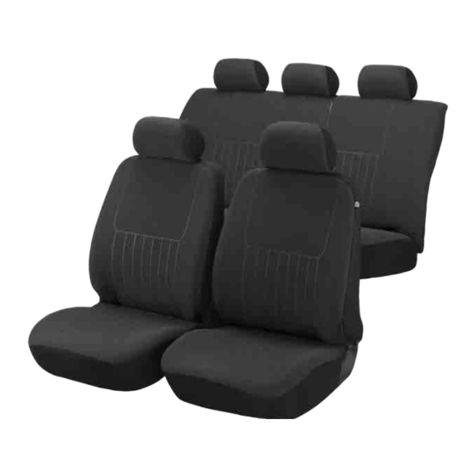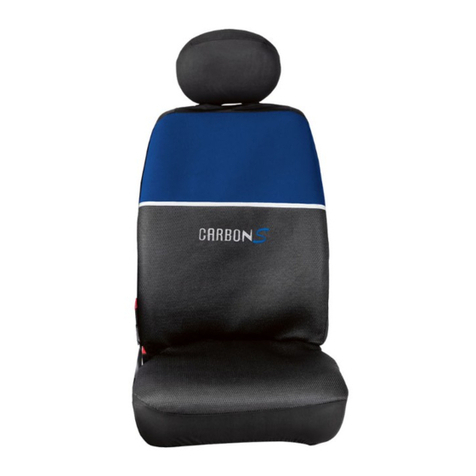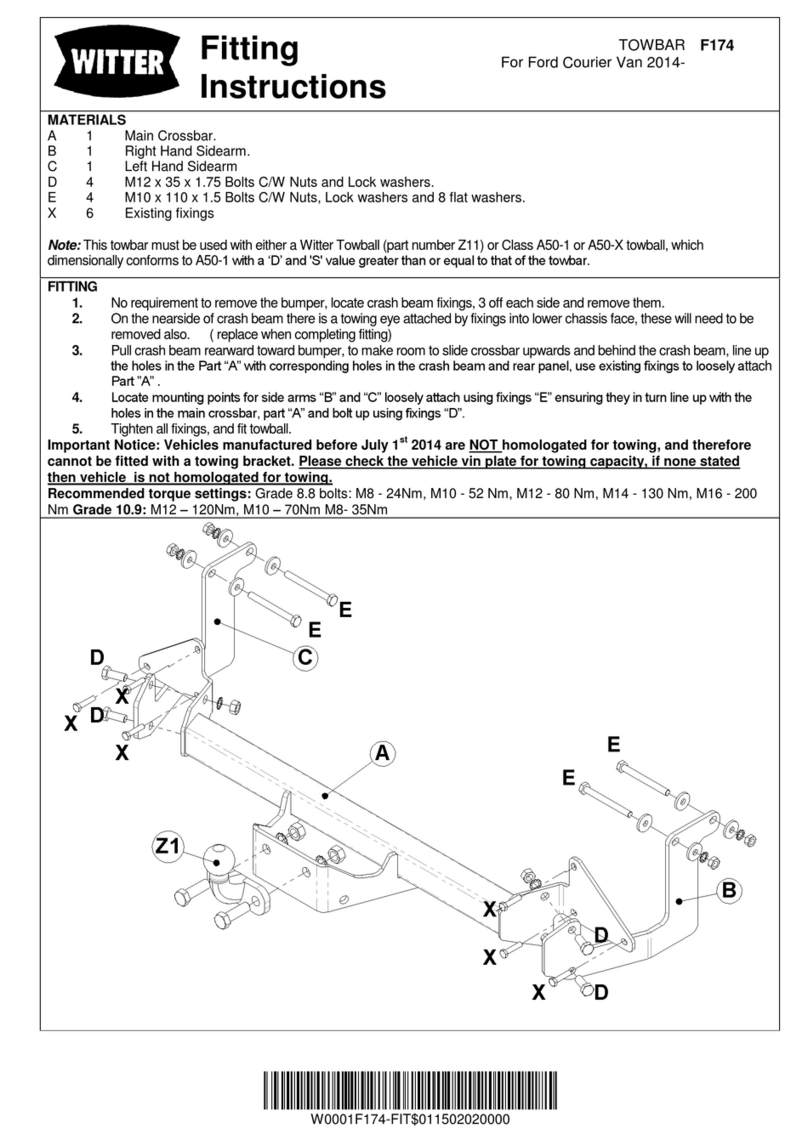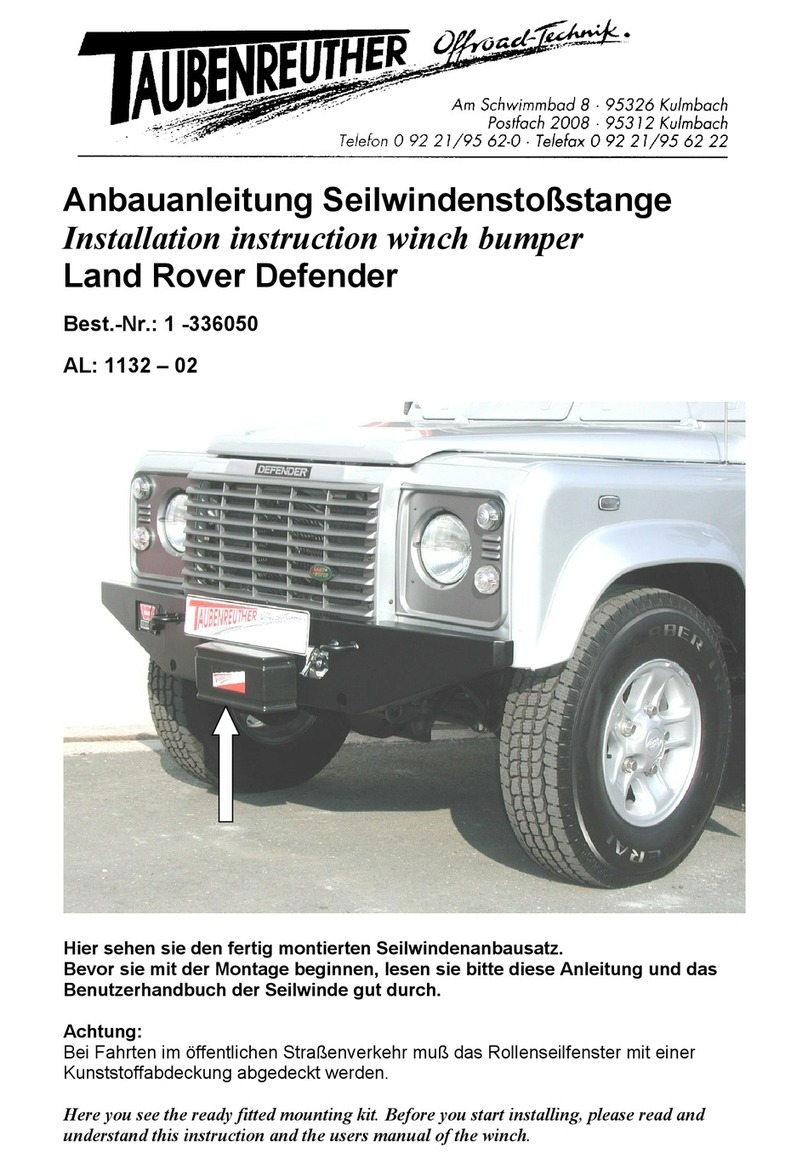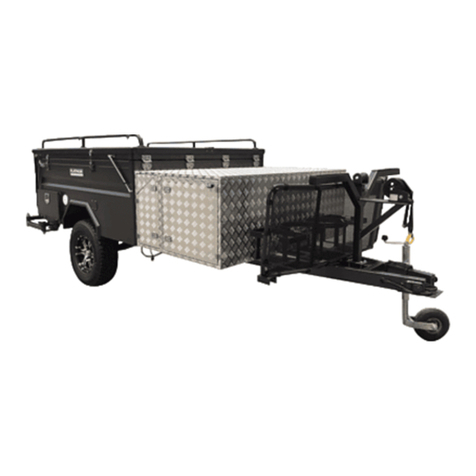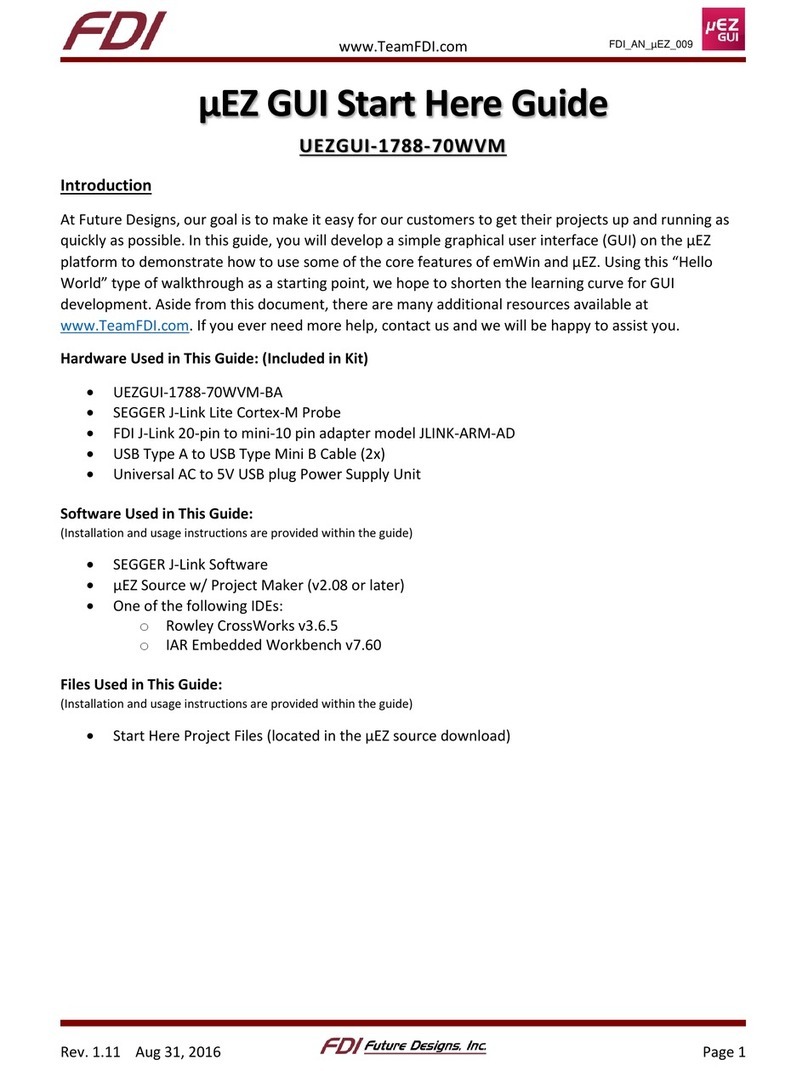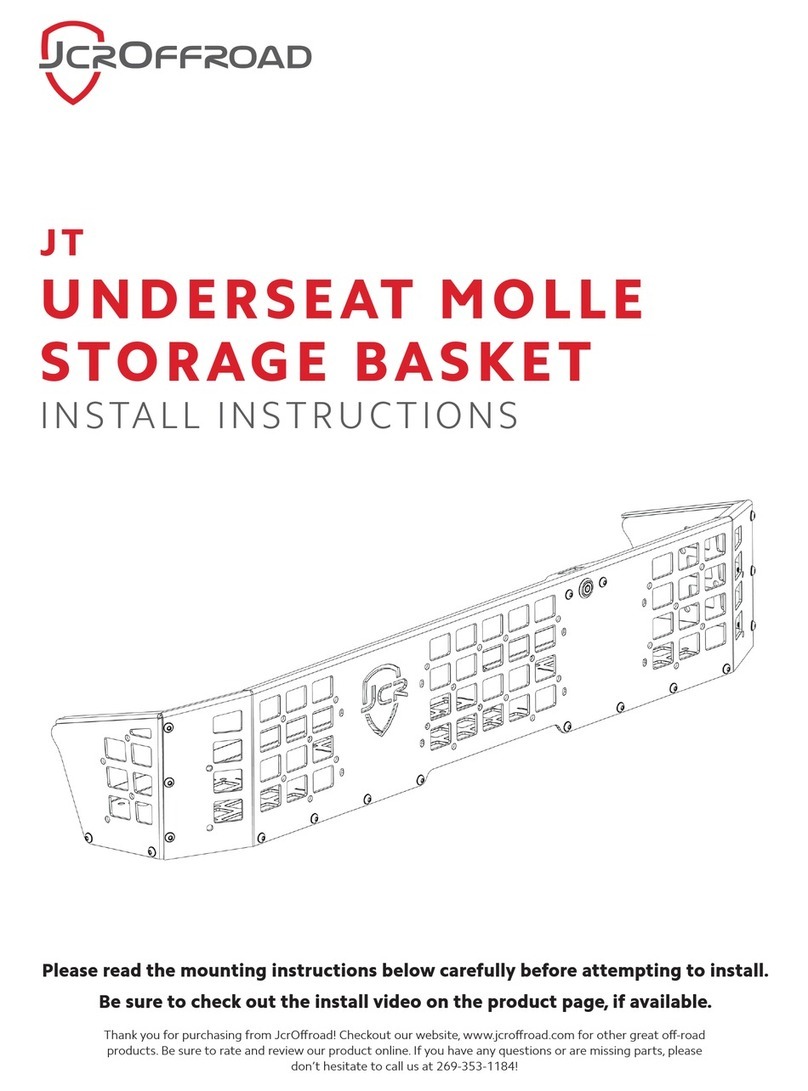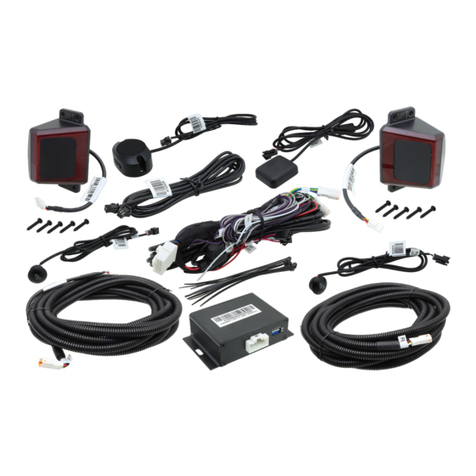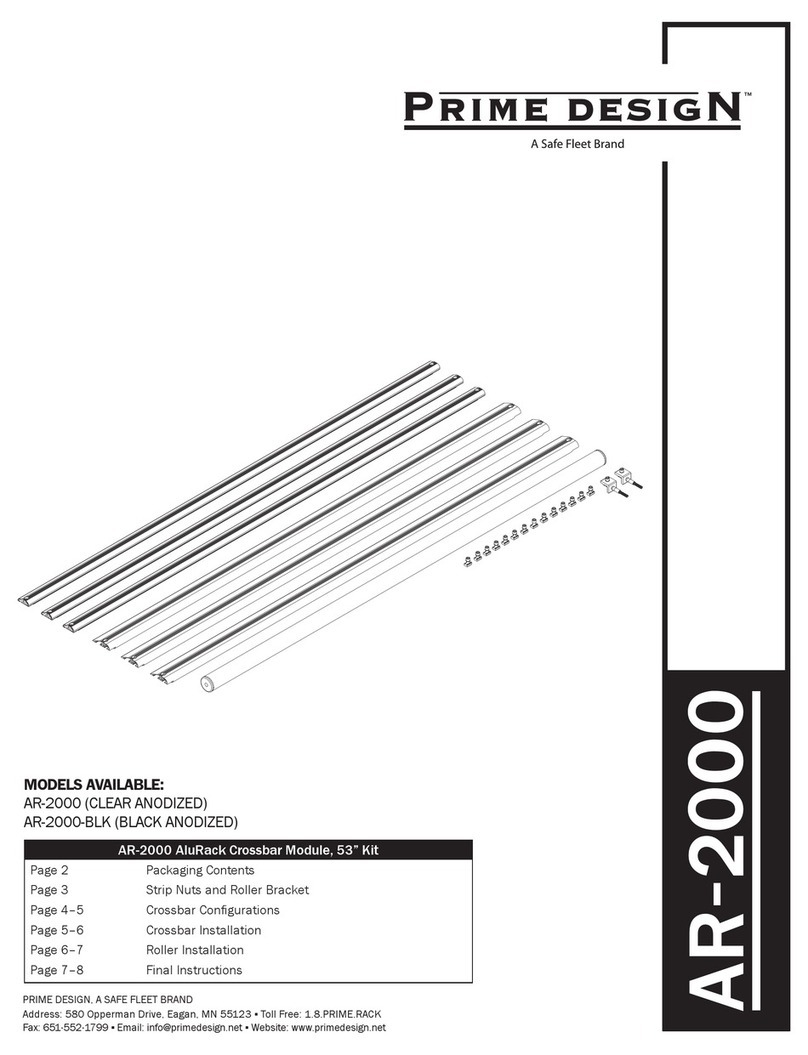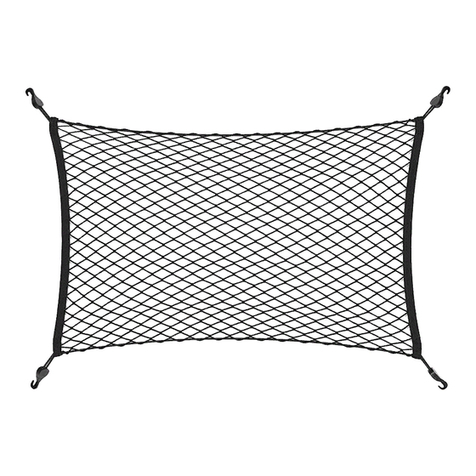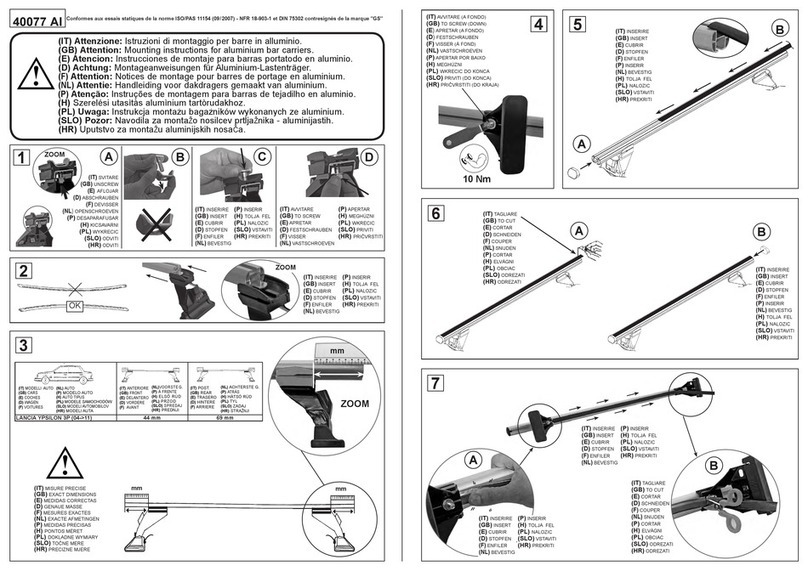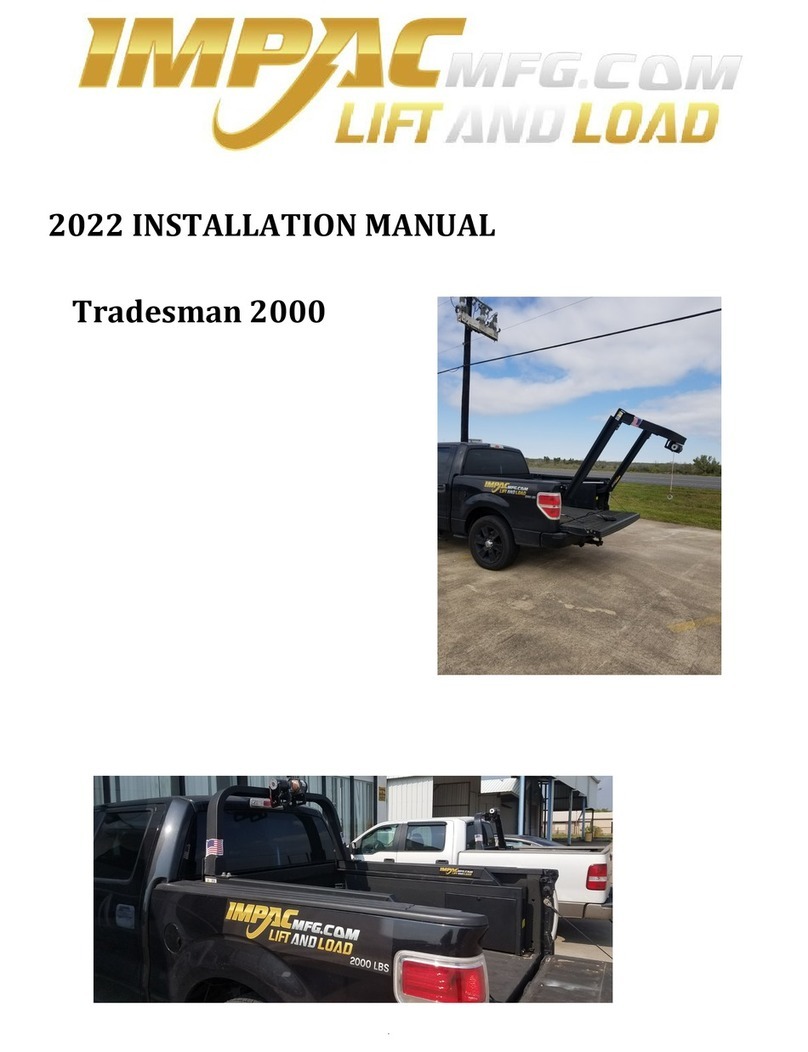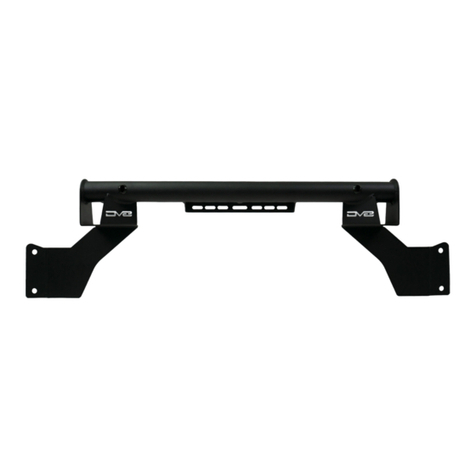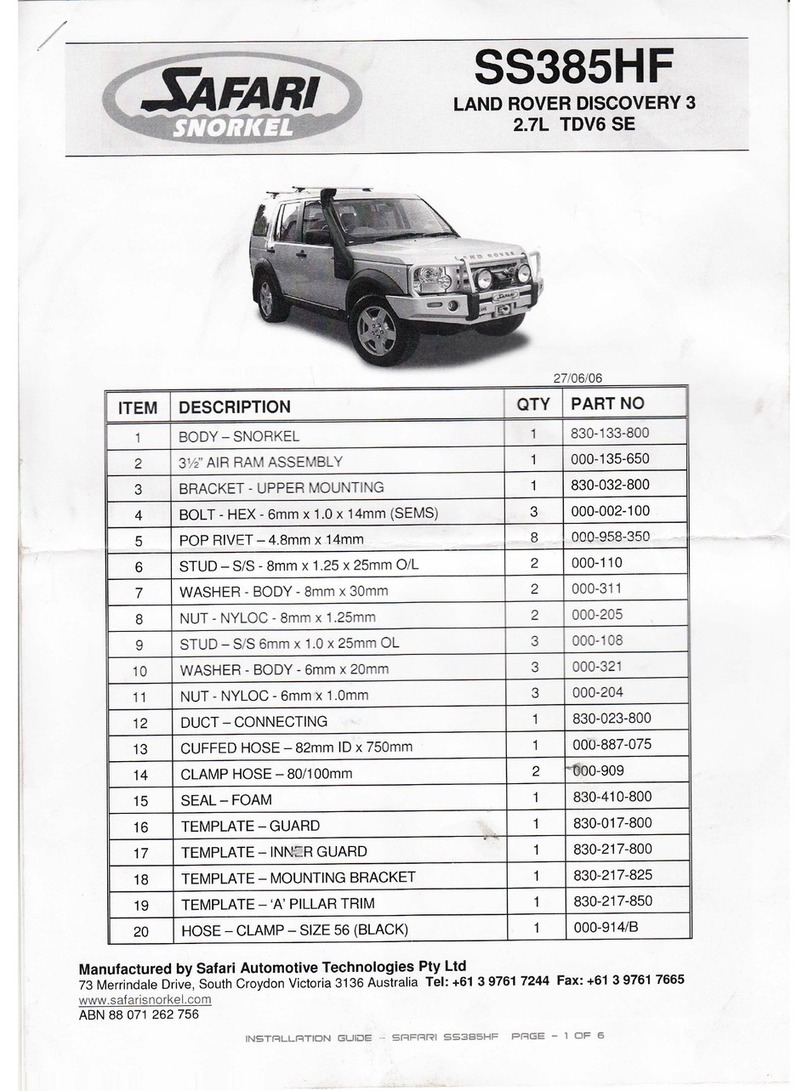
Guide on tent setup Chariot S3
Main Tent Opening
1. Locate your tent and pole map that is supplied with your Platinum Camper Trailer
2. Level camper with jockey wheel and winch down all stabilizer leg on camper trailer,
you must level camper before opening. Make sure hand brake is on.
3. Undo the all latches on each side of the camper trailer. Connect front winch cable to
the eyelet of the rear fold out floor. Let enough slack out with winch strap so that
when you push over the rear floor the strap will hold it ready to winch down. After
you have winched the rear floor, make sure the rear floor is sitting flat on the ground.
(NOTE DON’T WALK ON THE REAR FLOOR IF IT IS NOT LEVEL ON THE
GROUND. YOU MAY CAUSE DAMAGE) If the rear is not sitting flat on the ground
you may have to level the trailer further.
4. Connect the assistant winch to the eyelet at the rear of the hard floor, this will assist
you to bring over the front fold. Winch the hard floor over to the of the camper trailer,
all the frame work and canvas of tent will fold out towards the front of the camper
trailer. (REF TO MAIN TENT DIAGRAM)
5. Pull out the tent and framework for the rear fold, zip the rear tent assembly to the
base of the rear fold. Locate the two #5 tent poles at the end of main tent in to the
corners etc (REF TO MAIN TENT DIAGRAM)
6. Unzip main door access the to the access inside
7. Locate number 4 spreader bars and locate them to the inside edge of the main tent
to firm up the main tent setup as necessary
Awning Setup
1. Ref to your tent map and understand which poles are needed for (Awning) setup
2. Layout poles required on the ground in preparation.
3. Layout the awning on the ground if possible along the side of the trailer that you are
attaching on to. Awning should be attached from right to left via a zipper on the main
tent.
4. Do not stand underneath the awning and try to it zip on from underneath, this is to
difficult to do. Stand on a small ladder or chair, hold the awning up to the left hand
side of the main tent and zip it on from the top side, you will find that the zipper will
flow a lot easier to put on. Two people is always best when putting the awning and
poles up
5. As stated earlier you have laid out you poles, again starting from right hand side of
the main tent, insert your first cross bar #7 in to and through the eyelet on the main
tent frame on one end, then insert #9 crossbar #10 pole on the corner of the awning.
6. Insert now #7 crossbar on #11 pole on the middle of the awning
7. Insert now #8 crossbar on #10 pole on the and insert #16 corner of the awning one
at the camper trailer. (REF TO AWNING DIAGRAM)
